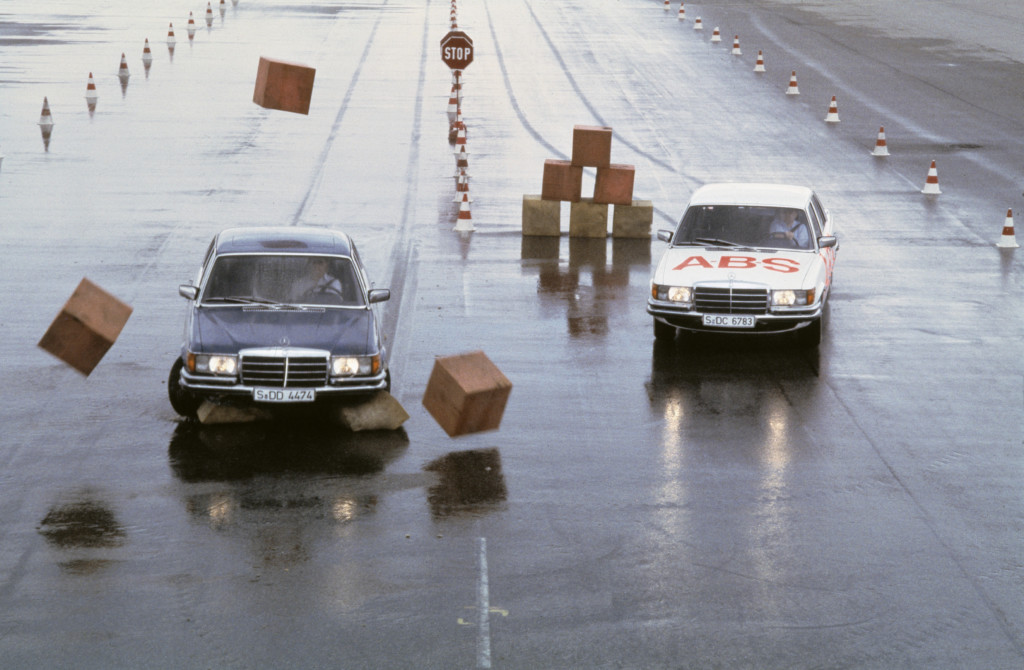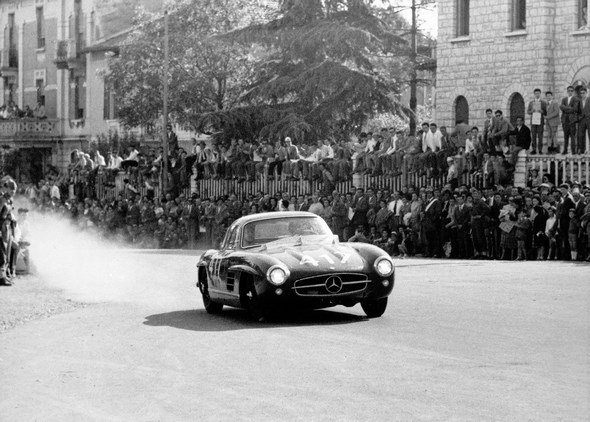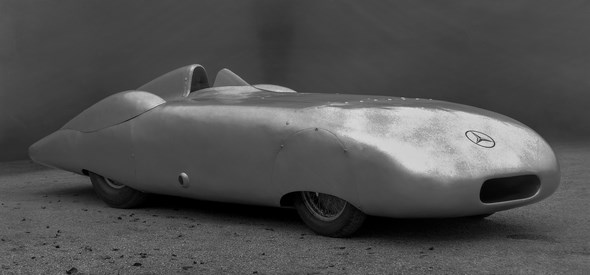Family reunion for the Mercedes-Benz S-Class


- ‘S-Klasse Club e. V.’ has around 1,300 members
- Passion inspired by these classy vehicles
- Annual meeting as the highlight, with supporting touristic programme
Stuttgart – Justly proud of their fine, classic cars are the 1,300 members of the Mercedes-Benz S-Klasse Club e. V., or S-Class Club, the only one in the world focusing specifically on the luxury-class vehicles with the three-pointed star to be officially recognised by Mercedes-Benz Classic.
The club is based in Germany, but its members come from all over the world. What is it about the S-Class that they love so much? Timeless elegance, power, safety, and comfort – which have always been the virtues of the luxury-class cars built by the Stuttgart brand.
The broad range of activities of the S-Class Club serves to demonstrate how simply an interesting club programme can be put together on the basis of these fascinating vehicles and the values that they embody. One of the highlights of the club’s year is the annual club meeting.
The venue for the 2012 get-together of these fine vehicles and their owners was Dresden, while this year they will be meeting up in Hamburg. Strolling along the lines of vehicles in Dresden, you would hear the comment time and time again: “The S-Class is built to last for ever.
” A sentiment that no one cares to contradict. These magnificent examples of the automotive luxury class were not simply on display as decorative objects against the backdrop of Schloss Eckberg (Eckberg Castle), where the meeting was held. They also attracted considerable attention and admiration during a drive out for club members.
Club President Thomas Sterl sees the S-Class as a cultural asset and is one of those who fell under its spell many years ago. He is therefore passionately devoted to his own five examples, while club activities take up a big part of his life – as indeed they do for many members.
The club is a serious organisation that has evolved out of respect for the car, as Sterl explained: “With our accumulated expertise we hope that we can play our part in nurturing the fascination for the S-Class.” Just as important is the lively sense of community that was already such an important element when the club was founded back in 2000.
Sterl describes the delight, verging on euphoria, when members found that they could discuss practical issues with like-minded people more or less at any time.
In its early days, the club was dedicated solely to the Mercedes-Benz 126 model series (1979 to 1991), but soon opened up to other representatives of the brand’s luxury-class model series.
Any Mercedes-Benz luxury-class vehicle is welcome – from the W 187 of the 1950s through to the six-cylinder “Ponton” model (W 180), the “Tailfin” models (W 111/112) of the 1960s and the 116 model series launched in 1972, as well as the later model series 126, 140, 220, and the recently discontinued 221 model series. And – no question at all – the pre-war representatives of the luxury and top-of-the-range class at Mercedes-Benz are similarly welcome.
Around a 1,000 of the club’s members are based in Germany, but a further 300 are scattered throughout the rest of the world. Many a friendship has been forged under the club’s aegis, with internet exchanges on technical matters leading on to people visiting each other.
Having said all this: you do not actually have to own an S-Class to become a member. Enthusiasts, occasional users, or anyone simply with an interest is also free to join in with club life – but sooner or later nearly everyone gets the bug and buys a car of their own, as Sterl knows well.

An annual programme of fascination in action
Club members show their enthusiasm in a wide variety of ways. Professional displays at classic car shows, as an integral part of the Mercedes-Benz stand in Essen or as an independent initiative in Stuttgart and Bremen, are among the measures enjoying widespread public appeal undertaken each year by the club.
Small groups of members will also often get together to attend classic car events either in Germany or abroad – the good news for all here is that there are a couple of dozen or more events each year to choose from.
But there are two events each year that the members of the S-Class Club can be guaranteed to keep their diaries free for: one of these is the event known as “Sterntage” or “Star Days”, the other is the club’s annual meeting: “The annual meeting is always the first unassailable date to go into my diary,” commented one W 126 driver from the Rhine-Main area in Dresden, adding with a grin: “And not even the woman of my dreams would be able to stop me from attending.” Not that she’d have to, because she could come along as well.
So what’s the difference between the “Star Days” and the annual meeting? The “Star Days” are more technically-oriented events, with workshops on topics such as vehicle appraisal and valuation, sheet metal working, paintwork care and fault diagnosis. The annual meeting always includes a touristic element, with city sightseeing tours or boat trips. And of course, the itinerary always also includes a drive out with the four-wheeled treasures.
It was with some satisfaction that the club president was able to announce at the awards ceremony that there were 126 participants at the Dresden meeting – a good excuse to focus attention once again on the 126 model series. There was little surprise, but nevertheless heartfelt applause, when a Norwegian member won the prize for travelling furthest to get to Dresden.
The Oslo resident was attending the event for the seventh time with his 560 SEL, appropriately enough a car from the 126 model series, about which he enthused: “My black beauty simply eats up the miles, making it the ideal car for long journeys.” Since working with the S-Class as a driver for a Scandinavian limousine service in the 1980s, the Norwegian had not been able to get the S-Class out of his mind: “Everything about that car is just perfect.” But it took until 2002 before he was able to buy one himself.
Since then he has lavished attention on the vehicle, named after a well-known Norwegian breed of horse whose name can perhaps best be rendered in English as “Black Beauty”.
Staying true to the motto: “fast, but sparing on materials and always with an eye to what’s ahead,” he particularly enjoys using his S-Class for driving on the European continent. Its current mileage stands at 260,000 kilometres. He still has fond memories of an outing during the annual club meeting in Berlin, in 2005, when seven black saloons belonging to club members drove in convoy through Germany’s capital city.
The approach roads into the city were quickly lined with people – Berlin’s residents presumably thought this was a state visit. The Norwegian visitor only toyed very briefly with the idea of getting hold of a blue light for the roof of his car, as he relates the story with a mischievous smile.
All historical S-Class vehicles are welcome
Talking of Berlin: another eye-catching model covered the distance from there to Dresden without any problem at all – a “Ponton” model 220a, first registered on 5 May 1955. Its owner had seen it parked on the roadside in the centre of Berlin 20 years earlier, with a neatly handwritten sign tucked behind the windscreen: “You don’t have to be a cigar-smoker to drive this car.
” The current owner, a solicitor in Berlin who up until that point had not owned a car – took the bait, and as he says himself: “From that moment on, I caught the classic car bug.” Of course for cars with the Mercedes star. For that, in his view, is what ensures that the car only very rarely has to go into the workshop.
And, thanks to his local authorised Mercedes-Benz workshop, he has no problems either with getting hold of replacement parts. He is particularly concerned to maintain the original condition of his Ponton, although after a slight hesitation admits that the one false note in this harmony of authenticity is a modern radio. Good advice, helpful support, and interesting specialist chat are his main reasons for valuing his club membership so highly. Could he be tempted by another car? “Perhaps a ‘Ponton’ as a cabriolet. But only as a second car, because I will never give up my Saloon – even if its value has doubled since I bought it.”
From Austria came a 380 SEC model from the 126 model series, whose owner related an amusing tale of how her father came to choose this particular colour. When he ordered the luxury-class Coupé in 1983 and pointed to a particular colour in the colour chart, the sales advisor objected to his choice, saying that this was the colour used for taxis and not suitable for a private vehicle. So the customer shrugged his shoulders and simply tapped the next colour on the chart – taiga beige.
Which is how it came about that his daughter has been driving this heirloom for some years now, attracting considerable attention at every turn for its elegant but highly unusual colour. As all the S-Class drivers at the Dresden club meeting report, her luxury-class classic is only ever met with smiles and good humour – and never any element of envy.
She often gets to hear “that my car is a feast for the eyes – and I plan to do all that I can to preserve it for another 30 years.” She has no plans to go particularly easy on her very special coupé, despite the 295,000 on its clock. “After all, it was built to be driven and not to stand around, so it has even been known for the needle to hit 210 km/h on the motorway from time to time.”
One small group sits talking about paintwork and leather when they get back from the sightseeing tour, drawing many parallels between the meticulously restored old city of Dresden and their own mobile sculptural artefacts. Nor is the group without its younger members. Among them are a father and son from Germany’s Swabia region, who have driven to Dresden separately in their 126-model series luxury-class Coupés: the older man is driving a 420 SEC built in 1985, the younger a 500 SEC from 1989. In the younger pairing, driver and vehicle are more or less the same age.
Cherished classic Mercedes cars
The snow-white Coupé belonging to the father stands neatly between its peers, and its owner is happy to let people take a peek under the bonnet: wherever you look it is in absolutely flawless condition, down to the last shining detail.
The Swabian admits that he has often been asked if he works on it with a toothbrush: “I’m just fussy, and for me working on the car is as much part of the fun as driving it.” His son is more relaxed about things, as you might expect, but even he resorts in desperation to a pair of tweezers to get the electric seat adjustment mechanism working: dust had got between the contact points.
He tells the story of how his grandfather used to drive his S-Class in secret – out of modesty, so as not to be seen as showing off. Such an attitude is unimaginable for the young man in today’s world: he is proud of his car and enjoys seeing the cavalcade of luxury limousines on club days as well as on other occasions.
Such events are not the only chance to enjoy a sight like this though, as the various generations of the S-Class can still be admired on streets all over the world.

The Mercedes-Benz Clubs
Few automotive brands have such an international, extensive and lively club life as Mercedes-Benz. On the company’s side of things, the Mercedes-Benz Classic Club Management looks after more than 80 recognised brand clubs around the world, with around 90,000 members.
These clubs represent a vital link between the club scene and Mercedes-Benz itself. Mercedes-Benz Classic is an important point of contact for the many varied club activities that take place, from the provision of specialist information through to practical support – for example at exhibitions, motor shows, driving events and competitive series such as the “FHR Endurance Cup” or the “Young Classic Trophy”.
Club membership provides contacts and the opportunity to meet like-minded people from all over the world who share a desire to preserve the heritage of the brand and nurture respect for the automobile as a cultural asset – and who enjoy working hard in the interests of their brand.
Within the club scene as a whole, fascination for the Mercedes-Benz brand extends across all model series. The spectrum represented by such clubs ranges from the historical supercharged cars through to commercial vehicles and even to all the current model series, depending on the nature of the specific club – the various club websites give details of their respective areas of emphasis.
Rooted in the club scene: “Mercedes-Benz & Friends”
“Mercedes-Benz & Friends” is the name given to an event organised by the Mercedes-Benz Classic Club Management. This takes place in a different country each year and is open to all members of any officially recognised brand club. On top of this, the registered clubs organise more than 200 driving events of their own each year.
The continuity that such multifaceted club work allows and the strong ties felt to the Mercedes-Benz brand are also evident in the many anniversaries that are marked under the banner of the three-pointed star.
One of the highlights of recent years’ events was the organisation of a unique rally: the summer of 2011 saw some 2,000 vehicles, 1,800 club members from more than 30 countries and 200,000 visitors gather at the former Berlin-Tempelhof airfield for the biggest celebration ever of the Mercedes-Benz brand, held in the year that marked the anniversary of “125! years inventor of the automobile”.
The recognition of new clubs is subject to a series of very transparent criteria developed by Mercedes-Benz Classic, who will also provide help and advice to anyone considering establishing a new club.
Brand club: one membership, many advantages
Members of recognised brand clubs benefit in many ways from their connection with Mercedes-Benz Classic. These include events, but also technical advice and support on all vehicle-related questions – an important pillar of club work. It is also possible to arrange exclusive guided tours in areas of the company that normally remain off-limits to the general public – such as the design, development or research areas.
The Mercedes-Benz ClubCard is available exclusively to members of recognised clubs. Holders of the card are able to source genuine replacement parts on special terms as well as to purchase items from the club shop or from numerous cooperation partners.
Sharing knowledge among the worldwide club community
The daily work of the club involves conveying content and values. The aim is to ensure that the officially recognised brand clubs reflect a common standard, while they are also given exclusive access to a comprehensive range of services, know-how, and contacts at Mercedes-Benz Classic and Daimler AG.
The Internet has become an important part of club life, as it makes sharing information and general communication so much faster. The range of offers in relation to Mercedes-Benz that are to be found on the World Wide Web are as multifaceted as the club scene itself. One of the shared projects between Mercedes-Benz Classic and the brand clubs is the Mercedes-Benz Classic Wiki (www.mercedes-benz-classic.com/wiki), which provides information, notice of events and all sorts of tips and tricks relating to the brand with the three-pointed star in very clear form and accessible to all.
Many of the clubs around the world also have their own internet sites and use a wide range of social media channels, such as Facebook or Twitter. When designing their own club homepage, the recognised Mercedes-Benz Clubs are also provided with professional software and design guidelines from Daimler AG and the Mercedes-Benz brand. These give the clubs, for example, the possibility to design their website according to the Mercedes-Benz Corporate Design guidelines – in other words with the official wordmark, Mercedes star and the current colour scheme.
Did you already know?
The history of the S-Class is the centre stage of the current special exhibition at the Mercedes-Benz Museum. The exhibition is expected to run until well into the autumn.





